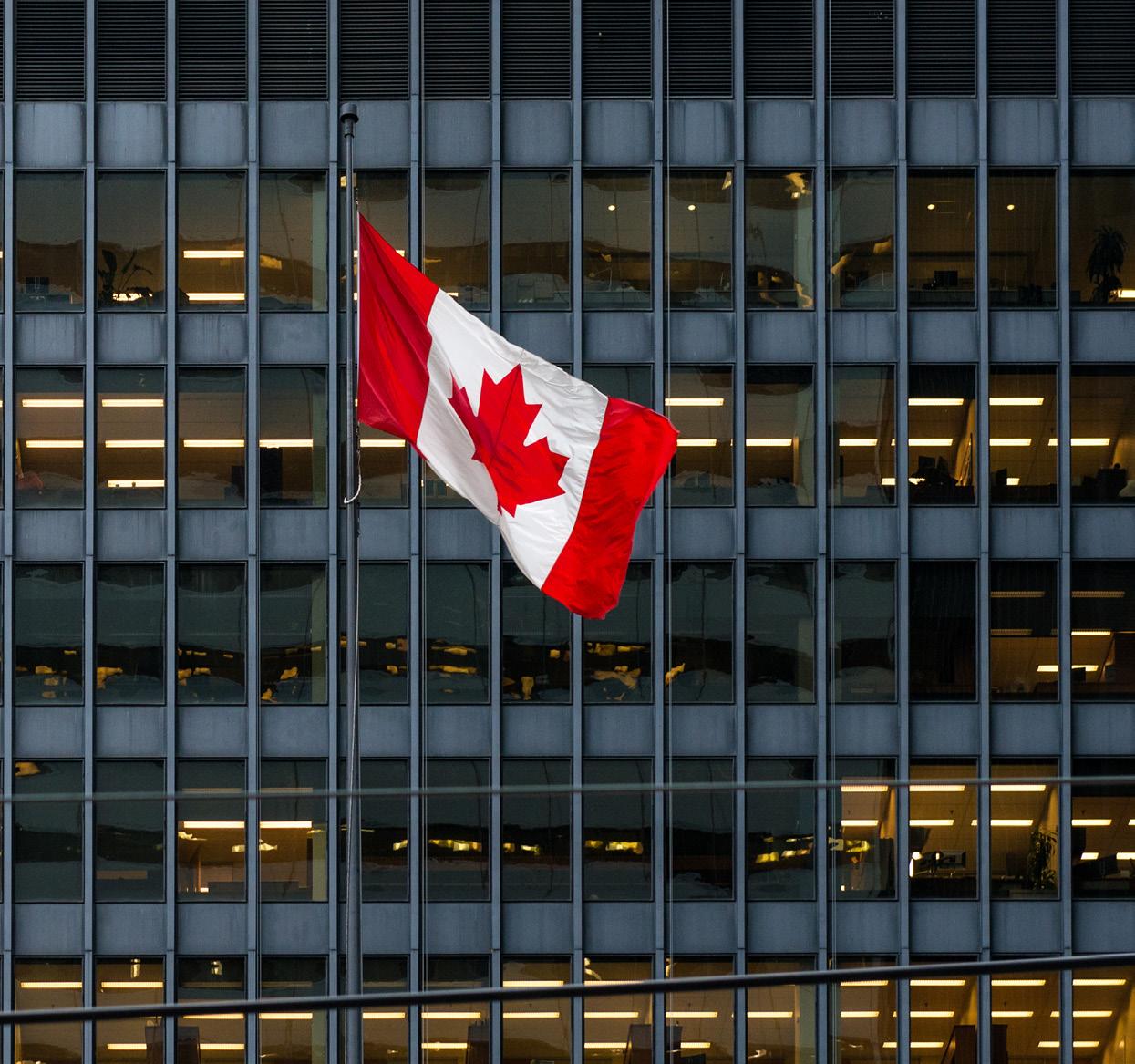









 WRITTEN BY: ALEX CLERE
PRODUCED BY: JACK MITCHELL
WRITTEN BY: ALEX CLERE
PRODUCED BY: JACK MITCHELL


Practice Leader, Diana Halder, explains how the company is acting as a catalyst for real-time payments


Diana Halder is Payments
Practice Leader at EY Canada, a role she has held since September 2019, becoming a full Partner in the firm three months ago. A vastly experienced payments industry executive, she previously spent six years at Accenture, as well as working in payments and global banking at Scotiabank.
When she catches up with us from her office in Toronto, Canada, it’s clear that this experience has set her in good stead. But she acknowledges that, even though she’s been in the industry for over 18 years, she’s always learning new ways to become a better leader.
“Putting people first definitely matters,” she tells us. “It’s important to understand their interests and ambitions to keep them motivated and engaged.” She characterises the tenets of strong leadership as ‘four Ps’ – people, patience, persistence, and being provocative when it comes to innovation.
“You tend to get a lot of noes as a female and as a minority in a male-dominated industry. There can be a lot of ‘no you
shouldn’t do that’ or ‘no you need to wait’.” Her message is all about being persistent and confident in your vision.
Indeed, gender equality and breaking down barriers for women are common threads woven through many areas of financial services worldwide. According to a report published last year 1, women land just 21% of board seats and only 19% of C-suite roles within the sector globally. That figure falls to an astonishingly low 5% when it comes to the CEO position.

It’s an issue that matters both to EY Canada – which has developed a programme called ‘Women. Fast forward’ to address gender equity in the workplace – and to Canadians.
COMPANY: EY CANADA
Diana Halder is a partner at EY Canada, leading the Canadian Payments Practice. She has over 18 years of experience in payments strategy design and large-scale programme delivery. Her domain knowledge in payments spans retail and commercial segments. Diana plays an active role in influencing the payments industry trends and is currently championing the QR code payments standards work in Canada.

Halder works with Canadian and US financial institutions, fintechs and big-techs to bring them in-depth

The country currently has a genderbalanced cabinet, meaning there are equal numbers of male and female members, and the Canadian government has previously introduced disclosure requirements that bring the issue of gender parity in the workplace into the spotlight, whether companies want it there or not. In case you’re wondering, women represent 51% of the workforce at EY Canada including 45% of management roles.

Canada is a vibrant and modern economy that originated well-known firms such as Shopify, Lululemon and Thomson Reuters. But there is sentiment north of the border that Canada is often overlooked in favour of their American cousins, particularly when it comes to industries like fintech and financial services – which, traditionally, have been concentrated around Silicon Valley and Wall Street respectively.
“Putting people first definitely matters. It’s important to understand their interests and ambitions to keep them motivated and engaged”
DIANA HALDER PARTNER, PAYMENTS PRACTICE LEADER, EY CANADA
With more than 400,000 people immigrating to Canada every year to turbocharge economic growth, we’ll likely see that influx of people begin to add extra pressure on Canadian financial institutions and payment service providers to meet the demand for cheaper, faster payments – especially with crossborder payments.

The country is already incredibly diverse, with one of the largest foreignborn populations in the world. Canada has
always embraced new cultures, right from the very beginning, Halder says. “My parents immigrated here from a country hampered with social and political challenges,” she explains.
“In Canada, I got access to free education, free healthcare, and I’ve been able to take advantage of those tools to get me to where I am today. That is one of the reasons I spend a lot of time with minorities and with females to empower and enable them – because I got that opportunity.”





















Darrell MacMullin, SVP Products and Platforms at Mastercard in Canada, talks to us about the pace of change within disbursements and cross-border payments.
WRITTEN BY ALEX CLERE


When we dial in virtually to speak with Darrell MacMullin, Senior Vice President for Products and Platforms at Mastercard in Canada, he’s just got off the phone with his telecom provider. MacMullin is constantly evaluating the experiences he receives as a user, and applying those learnings to his role. “I am definitely UX-obsessed,” he admits.
Over the last 5-10 years, he believes several macro trends have redefined disbursements and cross-border payments. These include the rise of the gig economy; the emergence of new verticals in gaming and gambling that are moving into the scope of regulators; greater demand for choice in various different payment use-cases; and more exacting expectations from the general public.
“People’s expectations are on demand for almost everything now,” MacMullin says. “Whether it’s a refund from a health insurance company or a person needing to send money to family back home, they don’t want to wait days for that anymore. The expectation is that it has to happen in near real-time.”
In order to meet this evolving demand, Mastercard has placed a huge emphasis on its Mastercard Send platform, which facilitates secure, near-real time payment transfers between billions of cards, banks and digital accounts. Mastercard has also been investing heavily into new payments infrastructure, applications and services. “We’ve completed acquisitions and integrations of a number of companies and capabilities that give us the ability to reach about 90% of the world’s population with Mastercard CrossBorder Services,” MacMullin tells us. “Together, Mastercard Send and Cross-Border Services can support payments to bank accounts, mobile wallets, cash payout locations, and any card type and scheme whether it’s debit, credit or prepaid. The platform enables banks and fintechs to be able to move money to support multiple use cases including remittances, small business and commercial payments.”
It is clear to see how much her past contributes to her passion for improving the representation of women and other underrepresented groups in the workplace.
Canadian consumers want to see more choice Canada has an annual GDP of roughly US$2tn (CA$2.7tn). Within financial services specifically, much of that activity is concentrated around Toronto, the country’s largest city. According to industry database Crunchbase, the Greater Toronto Region –which extends along the shoreline of Lake Ontario – is home to more than a quarter of Canada’s banks, financial institutions, insurers and fintechs, despite accounting for just a sixth of the national population.

“The future of embedded payments lies in the ability to make the movement of money seamless and contextual”
DIANA HALDER PARTNER, PAYMENTS PRACTICE LEADER, EY CANADA


“I believe we’re similar to California when it comes to population size,” Halder tells us. Indeed, according to the latest estimates, the Golden State has one million more people than the Great White North. “So that’s one state in the US compared with our entire country,” she adds. Despite the smaller population Canada is ideal to pilot new technology, products or services because Canadians tend to be faster at adopting digital solutions.
From a payments perspective, Canada is in the midst of modernising its payment infrastructure and policies. Halder believes the industry isn’t as heavily regulated as other parts of the world – like the UK or Australia – and that the country is influenced
by the bigger banks. “They tend to drive the pace at which we innovate,” she says. This is similar to other geographies that have a big banking footprint.
“There is definitely innovation coming out of Canada, but the pace of this innovation and the level of competition is slower, as compared to other G7 countries.”
Oligopolies exist within sectors like telecommunications, internet service providers, hydroelectricity, and of course financial services. Though there is good infrastructure and services in those areas, competition is quite sparse.
This construct finds its roots in Canada’s origin as a country. It’s in their DNA. The country was a relative early-mover with the
implementation of email money transfer by Interac, a form of faster peer-to-peer payments where deposit instructions and notifications are sent over email. Now the country’s payment ecosystem is moving Canada’s real-time payments into a new era.
“What we’re doing is setting up a centralised real-time payments network with centralised clearing and settlement capabilities on a more modern technology stack,” Halder says. “That would be comparable to the FedNow in the US or AP+ in Australia.”
She says that it would be ideal if Canada had the range of choice that the US has (for example Zelle, TCH’s real-time payments and FedNow), but the lack of competition has made that challenging. “Right now in Canada, we have one option. It would be great for consumers and businesses to have more choices from public or private realtime payments networks.”
A protected financial ecosystem isn’t the only consideration for Canada’s modernisation agenda; the lack of widespread education on the benefits of

“The common themes among impressive fintechs are that they’re all very provocative in the way they go to market. They’re very forward-thinking in their solutions”
DIANA HALDER PARTNER, PAYMENTS PRACTICE LEADER, EY CANADA
modernisation and ageing technology also slow down progress.
“Another challenge is the speed at which banks can transform their ageing infrastructure to enable real-time payments. Functions such as real-time fraud detection and real-time postings to the DDA should be in place for us to have widespread RTP offerings and therefore adoption.”
As with many sectors, the pandemic helped create an inadvertent, but welcome,
acceleration within the payments space. There’s no escaping the impact that the pandemic had on small-and-medium-sized businesses, in particular. According to the Department of Industry, lockdowns and business failures resulted in nearly threequarters of a million job losses by the end of 2021 alone. During the pandemic, EY championed initiatives that helped small businesses get access to support and subsidies from their government. EY brought together some of the most significant players – including Canada’s largest banks,



In this episode of Making Waves with EY, our host Diana Halder explores the latest trends, innovations and challenges shaping the payments industry with Global EY leaders.
PayTechs’ relentless disruption means that only banks and payment service providers that offer “value beyond payments” can compete.
Canada’s largest merchant acquirers, networks and paytechs – to create a new open-source standard for moving money via a quick response code (QR code).
“As a result of the pandemic, there has been a spike in movement towards digital or online payments as small-and-mediumsized businesses looked for cheaper and flexible money movement options.”
She suggests that the impetus is now on everyday Canadians to maintain the pressure on their banks and financial institutions, to be relentless in their pursuit of more convenient and robust payment solutions. “As Canadians, we’re very easygoing. We don’t pound the table when we don’t get what we want. Americans demand innovation, they demand competition. In Canada, not so much. We still have some of the highest telco bills, and we still get charged for our checking accounts.”
In everything that it does, EY Canada’s objective is to be a ‘change agent’ – as demonstrated in the collaborative approach that it’s been taking in the last few years. “Our mission statement in EY Canada is to be a ‘change agent’ within payments. We want to help bring about change through provocative thinking, innovative solutions
and creative partnering – not just with our clients but also our vendors and regulatory bodies.”
A prime example of this is the QR code work, developed during the pandemic, which will soon be recognised as Canada’s standard by its payments network owner and operator. This open-sourced standard is more accessible and cost effective to acquire and process payments, as compared to existing options. For smaller merchants, a QR code payments system opens up new possibilities because their mobile phones can be used to accept payments without having to pay for expensive infrastructure and technology, allowing financial inclusion for Canadian merchants who still cannot accept card payments.
One of the most promising areas of innovation, as they see it, lies in embedded payments. This API-enabled capability allows household names to offer convenient money movement experiences. It allows non-banks to offer digital wallets; nonlenders to provide credit at checkout or when budgeting; and non-insurers the ability to distribute insurance, when you’re renting
“Our mission statement in EY Canada
Payments is to bring about change through provocative thinking, innovative solutioning and creative partnering”
DIANA HALDER PARTNER, PAYMENTS PRACTICE LEADER, EY CANADA
a car or booking a holiday for example.
Embedded payments effectively remove the need to pull out your card or toggle to a different experience or application to make a payment, but it instead seamlessly initiates the payment as a part of an experience. “Think Uber,” Halder says.
Embedded payments is one area that EY Canada Payments is really focusing on, anticipating that the total addressable market for such services will reach trillions of dollars within the decade.
“You have cheaper tech that’s coming online, making it accessible and available for businesses and individuals to innovate upon.” Halder says. “Group that with the standardisation of payment messages, the spread of openbanking and real-time payments and you have yourself the ideal conditions for embedded payments.”
This will obviously, then, be a huge area of focus for the team at EY. The company itself will be building out its assets and support services so that it can play a key role in that transformation of Canada’s realtime payments industry – and, of course, EY Canada will continue to work hand-in-hand with the diverse list of clients that it already numbers among its clientele. They include financial institutions and credit unions, big tech, entertainment and media companies, ecommerce platforms as well as paytechs and fintechs.
Finally, the company is big on ESG and diversity. With its ‘Women. Fast forward’
programme, EY Canada will continue to champion women in the workplace, bolstered by those impressive figures about the number of female employees in management roles within its own organisation.
But there is still a long way to go. According to a study by Equileap, the vast majority (81%) of Canadian firms do not publish details of their gender pay gap – although this number is inching down year-on-year. When it comes

of EY Canada employees are women, including 45% in management roles, compared to 20% average across whole of Canada
to gender parity in the boardroom, although most metrics are moving in the right direction, only 30% of senior managers at top Canadian firms are women. The number of women in the broader workforce is lower than comparable labour markets, including the US.


In fact, such is the state of gender diversity in corporate Canada, there are more CEOs at top publicly listed Canadian firms named Michael than there are women.
Interestingly, the Payments lines of business within financial services has one of the highest rates of female executives, an example that should be replicated across other areas. It’s refreshing to see the payments industry set an example in gender parity.
DIANA HALDER PARTNER, PAYMENTS PRACTICE LEADER, EY CANADA
“You tend to get a lot of noes as a female and as a minority in a maledominated industry. It’s all about being persistent”
1. Deloitte, 2022
100 Adelaide St W, Toronto, ON M5H 0B3

T 01234 5678910 ey.com/en_ca
POWERED BY:
